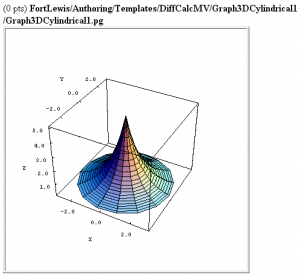Graph3DCylindrical1: Difference between revisions
(Created page with '<h2>Interactive Graphs of Functions in Cylindrical Coordinates</h2> 300px|thumb|right|Click to enlarge <p style="background-color:#f9f9f9;border…') |
(add historical tag and give links to newer problems.) |
||
| (5 intermediate revisions by 2 users not shown) | |||
| Line 1: | Line 1: | ||
<h2>Interactive Graphs of Functions in Cylindrical Coordinates</h2> | {{historical}} | ||
<p style="font-size: 120%;font-weight:bold">This problem has been replaced with [https://openwebwork.github.io/pg-docs/sample-problems/VectorCalc/CylindricalGraph3D.html a newer version of this problem]</p> | |||
<h2>Deprecated: Interactive Graphs of Functions in Cylindrical Coordinates</h2> | |||
[[File:Graph3DCylindrical1.png|300px|thumb|right|Click to enlarge]] | [[File:Graph3DCylindrical1.png|300px|thumb|right|Click to enlarge]] | ||
<p style="background-color:#f9f9f9;border:black solid 1px;padding:3px;"> | <p style="background-color:#f9f9f9;border:black solid 1px;padding:3px;"> | ||
This PG code shows how to make an interactive graph of a function in cylindrical coordinates that is displayed using the LiveGraphics3D Java applet. | This PG code shows how to make an interactive graph of a function in cylindrical coordinates that is displayed using the LiveGraphics3D Java applet. It is deprecated because Java is no longer universally supported on all web browsers and platforms. | ||
</p> | </p> | ||
* | * File location in OPL: [https://github.com/openwebwork/webwork-open-problem-library/tree/master/OpenProblemLibrary/FortLewis/Authoring/Templates/DiffCalcMV/Graph3DCylindrical1 FortLewis/Authoring/Templates/DiffCalcMV/Graph3DCylindrical1/Graph3DCylindrical1.pg] | ||
<br clear="all" /> | <br clear="all" /> | ||
| Line 111: | Line 114: | ||
Live3Ddata( | Live3Ddata( | ||
$plot, | $plot, | ||
image => " | image => "bell-shape.png", | ||
size => [400,400], | size => [400,400], | ||
tex_size => 600, | tex_size => 600, | ||
| Line 127: | Line 130: | ||
</p> | </p> | ||
<p> | <p> | ||
After you construct the graph you like, <b>don't forget to take a screen shot of it and make an image file such as <code> | After you construct the graph you like, <b>don't forget to take a screen shot of it and make an image file such as <code>bell-shape.png</code> that will be used in the pdf hardcopy.</b> | ||
</p> | </p> | ||
</td> | </td> | ||
| Line 154: | Line 157: | ||
Context()->texStrings; | Context()->texStrings; | ||
BEGIN_SOLUTION | BEGIN_SOLUTION | ||
Solution explanation goes here. | Solution explanation goes here. | ||
END_SOLUTION | END_SOLUTION | ||
| Line 177: | Line 179: | ||
[[Category:Top]] | [[Category:Top]] | ||
[[Category: | [[Category:Sample Problems]] | ||
[[Category:Subject Area Templates]] | |||
Latest revision as of 10:33, 18 July 2023
This problem has been replaced with a newer version of this problem
Deprecated: Interactive Graphs of Functions in Cylindrical Coordinates

This PG code shows how to make an interactive graph of a function in cylindrical coordinates that is displayed using the LiveGraphics3D Java applet. It is deprecated because Java is no longer universally supported on all web browsers and platforms.
- File location in OPL: FortLewis/Authoring/Templates/DiffCalcMV/Graph3DCylindrical1/Graph3DCylindrical1.pg
| PG problem file | Explanation |
|---|---|
|
Problem tagging: |
|
DOCUMENT(); loadMacros( "PGstandard.pl", "MathObjects.pl", "parserVectorUtils.pl", "PGcourse.pl", "LiveGraphicsCylindricalPlot3D.pl", ); TEXT(beginproblem()); |
Initialization:
We need to include the macros file |
Context("Numeric");
Context()->variables->are(x=>"Real",y=>"Real",r=>"Real",t=>"Real");
$a = random(2,4,1);
$plot = CylindricalPlot3D(
function => Formula("$a*cos((r^2)/4)"),
rvar => "r",
tvar => "t",
rmin => 0,
rmax => 6,
tmin => 0,
tmax => 2*pi,
rsamples => 20,
tsamples => 15,
axesframed => 1,
xaxislabel => "X",
yaxislabel => "Y",
zaxislabel => "Z",
outputtype => 4,
);
|
Setup:
We generate a string of plot data using
Setting |
Context()->texStrings;
BEGIN_TEXT
\{
Live3Ddata(
$plot,
image => "bell-shape.png",
size => [400,400],
tex_size => 600,
tex_center => 1,
scale => 1.1,
);
\}
END_TEXT
Context()->normalStrings;
|
Main Text:
To display the string of plot data
After you construct the graph you like, don't forget to take a screen shot of it and make an image file such as |
$showPartialCorrectAnswers = 1; |
Answer Evaluation: |
Context()->texStrings;
BEGIN_SOLUTION
Solution explanation goes here.
END_SOLUTION
Context()->normalStrings;
COMMENT('MathObject version.');
ENDDOCUMENT();
|
Solution: |